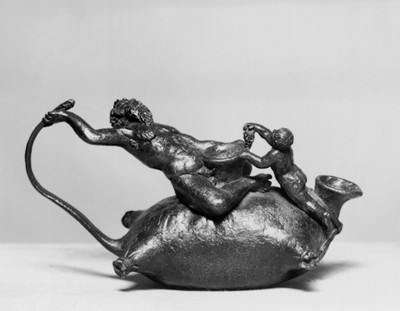Cairo's Museum of Egyptian Antiquities has revealed the reincarnation of King Tut, the boy pharaoh whose burial accouterments have fascinated the world for a century.
Actually reborn in 1992, modern Tutankhamun felt the time was right to make his corporeality public. An exhibition of Tut artifacts is currently on display at Los Angeles' California Science Center; L.A.'s The Getty is showing "Beyond the Nile: Egypt in the Classical Age"; and saxist Pharoah (sic) Sanders is concluding a 50th-year celebration of his classic 1967 Impulse release "Tauhid," featuring the song "Upper Egypt and Lower Egypt." He's playing Pasadena's Arroyo Seco Weekend this Saturday; Sunday at the same place finds the Bangles, who recorded the archaeologically significant 1986 hit "Walk Like an Egyptian."
In an interview with MetalJazz, Tut, now creative director for the London advertising firm Tut & Tuttle, expressed a wish to promote knowledge about ancient Egypt while keeping a low profile for himself. After all, he said, he doesn't want to disappoint people curious about the New Kingdom and the famous reforms of his monotheistic father, Pharaoh Akhenaten.
"It was some 33 hundred years ago," he said. "I was just a kid, and reincarnation being what it is, I don't remember anything."
Nothing? Has he ever tried hypnotic regression?
"Yeah -- I got a few flashes of old men trying to teach me stuff. It wasn't much fun, so I dropped it."
How did he find out he was Tut?
"I had a holiday in Egypt, and while there I dreamed it. I told my guide, who contacted the gentlemen at the museum, and the rest is history, y'know?"
How does he feel about being reincarnated? Mummification was supposed to unite pharaohs with the gods for all eternity.
"Being physical is a bit of a pain, and business is slow at the moment, but I can't complain."
Has he heard the Egyptian-themed death-metal band Nile?
"Hurts my ears. I like dance music."
MetalJazz showed Tut a picture we took at the Cairo Museum in 1990, showing two pillarlike objects found in Tut's tomb that some have identified as representing wineskins. Different from any other Egyptian art and not displayed in any of the three touring Tut exhibits we've seen, these icons have always fascinated us. Does modern-day Tut have any idea as to their purpose?
"Not a clue."
The identification card said the objects may have been as old to Tut as he is to us.
"I wouldn't, then, would I?"
* * *
PHOTO BY FUZZY BA.
* * *
We added this a couple of days after we posted: a Renaissance image of the reveling god Silenus riding on an ox wineskin. It fits with the golden Egyptian image in that the animal has a tail, although Tut's dedicatory skin has no rear legs, which could have been removed and sewn up. Is the golden image a fusion of sacred wine ("This is my blood") with Egypt's sacred Apis bull or maybe Aaron's golden calf?

